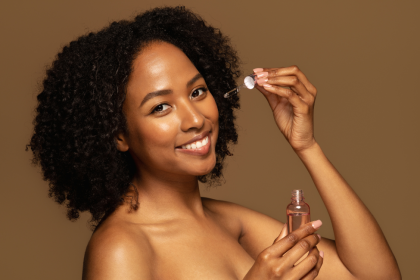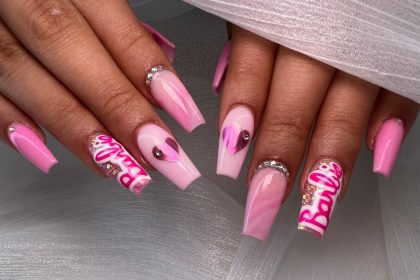You know that satisfying feeling when your face feels squeaky clean after washing? Like you’ve just stripped away all the dirt, oil, and sins of the day in one sudsy swoop? Well, here’s a plot twist that might make you rethink your entire skincare routine – that squeaky clean sensation could actually be your skin crying for help while you’re unknowingly aging yourself one wash at a time.
Most people approach face washing like they’re cleaning a dirty dish, going full throttle with harsh cleansers that promise to obliterate every trace of impurity. But your face isn’t a greasy pan, and treating it like one might be the sneaky culprit behind those unexpected fine lines and that dull, tired-looking complexion you’ve been blaming on stress and lack of sleep.
The skincare industry has done a masterful job convincing us that clean skin equals healthy skin, and the cleaner the better. But what if this entire premise is wrong? What if your quest for the perfect cleanse is actually sabotaging the very thing you’re trying to protect?
The acid mantle your cleanser keeps destroying
Your skin has a naturally occurring protective barrier called the acid mantle, which sounds like something out of a chemistry textbook but is actually your skin’s first line of defense against aging. This invisible shield maintains your skin’s optimal pH level, keeps moisture locked in, and prevents harmful bacteria from setting up camp on your face.
Most commercial face washes have a pH level that’s way too high for your skin’s natural balance. While your skin prefers to hang out at a slightly acidic pH of around 4.5-5.5, many cleansers clock in at pH levels of 8-10, which is basically like washing your face with liquid soap. Every time you use these alkaline cleansers, you’re disrupting your acid mantle and forcing your skin to work overtime to restore its natural balance.
When your acid mantle gets constantly disrupted, your skin becomes more vulnerable to environmental damage, loses moisture more easily, and starts showing signs of premature aging. It’s like removing the weatherproofing from your house and then wondering why everything inside starts deteriorating faster than it should.
The over-cleansing trap that’s fooling everyone
Here’s where most people get caught in a vicious cycle that actually accelerates aging. You wash your face with a harsh cleanser, your skin feels tight and dry, so you assume you need more moisturizer. But the real problem isn’t that you need more products – it’s that you’re using the wrong cleanser and stripping away your skin’s natural protective oils.
Your skin produces natural oils for a reason, and they’re not all bad. These sebaceous oils help maintain your skin’s barrier function, provide natural moisture, and even have antimicrobial properties. When you strip them away completely, you’re removing your skin’s built-in anti-aging system and forcing it to go into overdrive trying to replace what you just washed down the drain.
The irony is that over-cleansing can actually make your skin produce more oil as it tries to compensate for what you’re removing. So you end up in this endless loop of harsh cleansing followed by increased oil production, which leads to more harsh cleansing, and the cycle continues while your skin ages faster than it should.
The sulfate situation nobody warned you about
Sodium lauryl sulfate and sodium laureth sulfate are the ingredients that make your cleanser foam up into those satisfying bubbles, but they’re also some of the harshest detergents you can put on your face. These sulfates are so effective at removing oil that they’re actually used in industrial cleaning products and car wash soaps.
When you’re using sulfate-heavy cleansers on your delicate facial skin, you’re essentially giving your face the same treatment you’d give your garage floor. These ingredients strip away not just dirt and makeup, but also the natural lipids that keep your skin plump, hydrated, and youthful-looking.
The damage from sulfates isn’t always immediately obvious, which makes them particularly sneaky aging accelerators. You might not see the effects right away, but over months and years of daily use, you’re gradually breaking down your skin’s natural defense systems and creating the perfect conditions for premature aging.
The pH imbalance that’s wrecking your skin barrier
Your skin’s pH balance isn’t just some abstract chemistry concept – it’s literally the difference between healthy, resilient skin and skin that ages before its time. When you use cleansers with the wrong pH, you’re creating an environment where harmful bacteria can thrive while beneficial bacteria struggle to survive.
The healthy bacteria that live on your skin actually help protect against aging by maintaining proper moisture balance and fighting off harmful microorganisms. When you disrupt your skin’s pH with alkaline cleansers, you’re essentially evicting the good guys and rolling out the red carpet for the troublemakers.
This pH disruption also impairs your skin’s ability to shed dead cells properly, leading to a buildup that makes your complexion look dull and uneven. Over time, this improper cell turnover contributes to the appearance of fine lines, rough texture, and an overall aged appearance that has nothing to do with your actual age.
The fragrance and preservative assault
Many face washes are loaded with synthetic fragrances and harsh preservatives that can cause chronic low-level inflammation in your skin. This might not show up as obvious irritation, but inflammation is one of the primary drivers of skin aging, breaking down collagen and elastin while creating an environment where wrinkles can form more easily.
Fragrance allergies are incredibly common, but many people don’t realize they’re having a reaction because the symptoms are subtle – slight redness, minor irritation, or just a feeling that their skin never quite looks as good as it should. These low-grade reactions add up over time, contributing to premature aging in ways that are hard to trace back to your cleanser.
Even if you don’t think you’re sensitive to fragrances, the cumulative effect of daily exposure to these synthetic chemicals can overwhelm your skin’s ability to maintain its youthful appearance and resilience.
The simple swaps that could save your skin
The solution isn’t to stop washing your face entirely, but rather to choose cleansers that work with your skin instead of against it. Look for gentle, pH-balanced cleansers that remove dirt and makeup without completely stripping your natural oils. Cream cleansers, oil cleansers, and low-pH gel cleansers can clean effectively while preserving your skin’s protective barrier.
Double cleansing, where you use an oil-based cleanser followed by a gentle water-based cleanser, can actually be less damaging than using one harsh cleanser. The oil cleanser removes makeup and sunscreen without stripping, while the second cleanser removes any remaining residue without over-drying your skin.
Pay attention to how your skin feels after cleansing. If it feels tight, dry, or squeaky, that’s your skin telling you that you’ve gone too far. Healthy, properly cleansed skin should feel soft and comfortable, not like it’s been through a chemical warfare experience.
The goal is to find that sweet spot where your skin is clean but not stripped, fresh but not tight, and ready to absorb the beneficial ingredients in your other skincare products without being damaged by the very first step in your routine. Your future self will thank you for making the switch before those harsh cleansers have a chance to do any more damage.
















